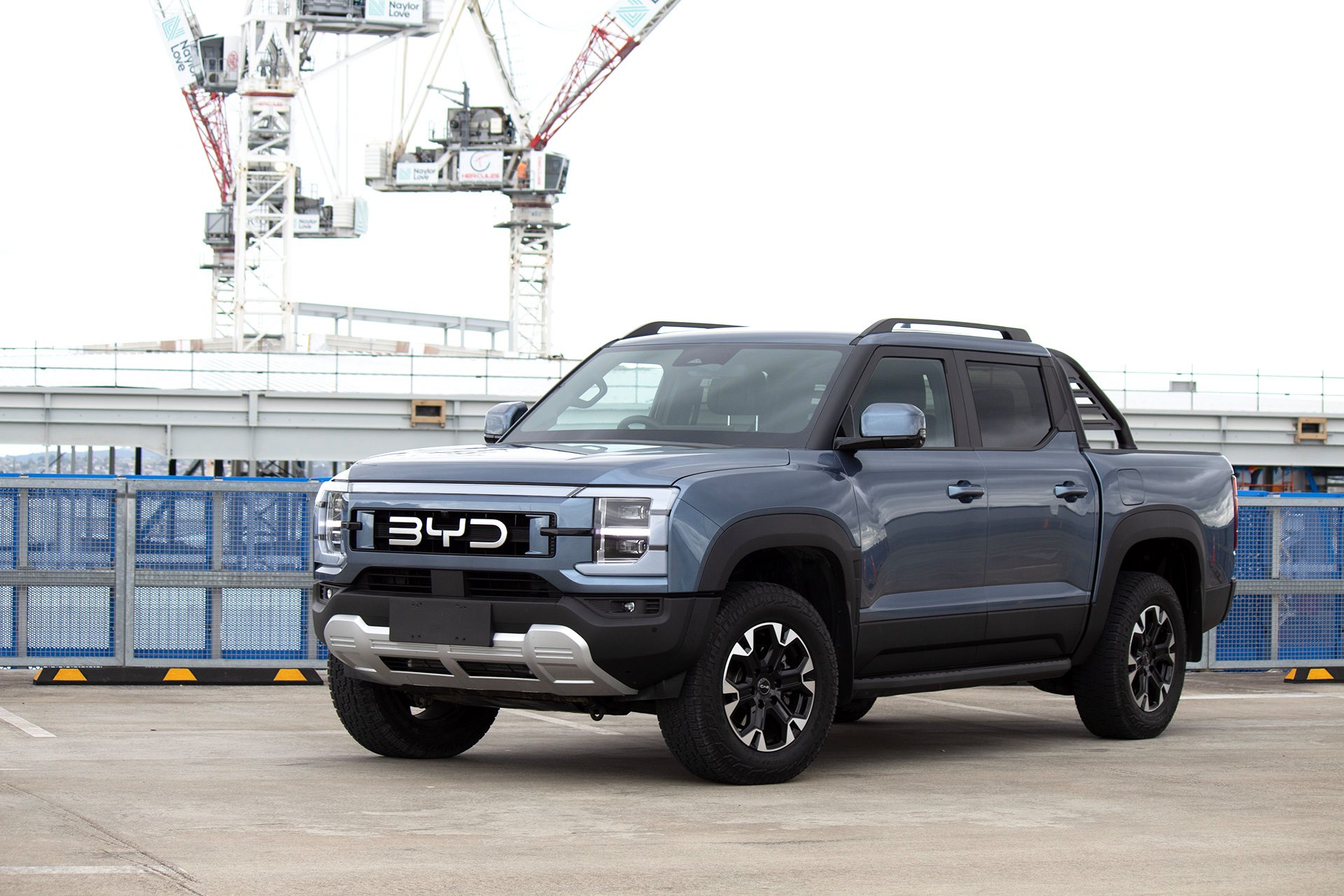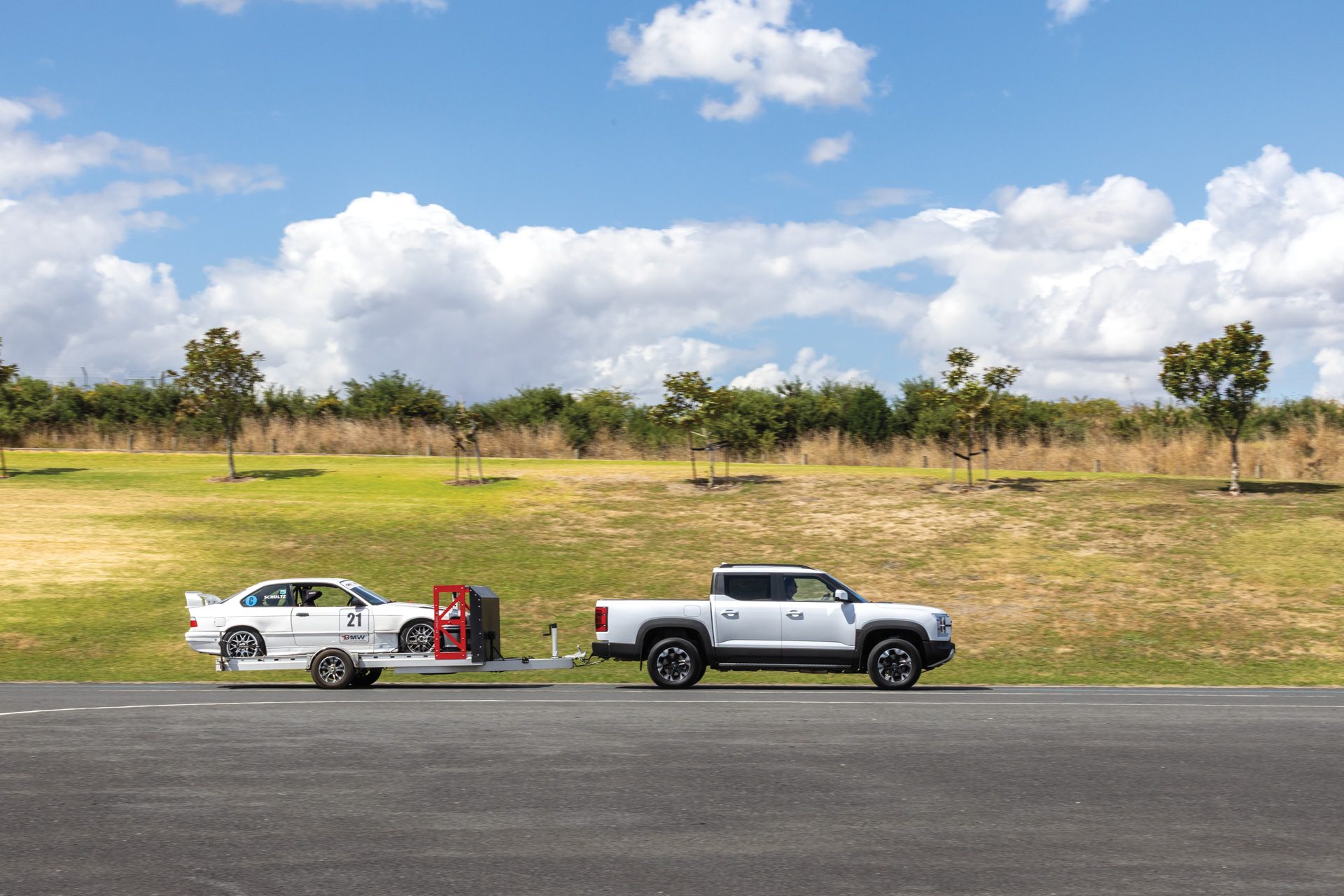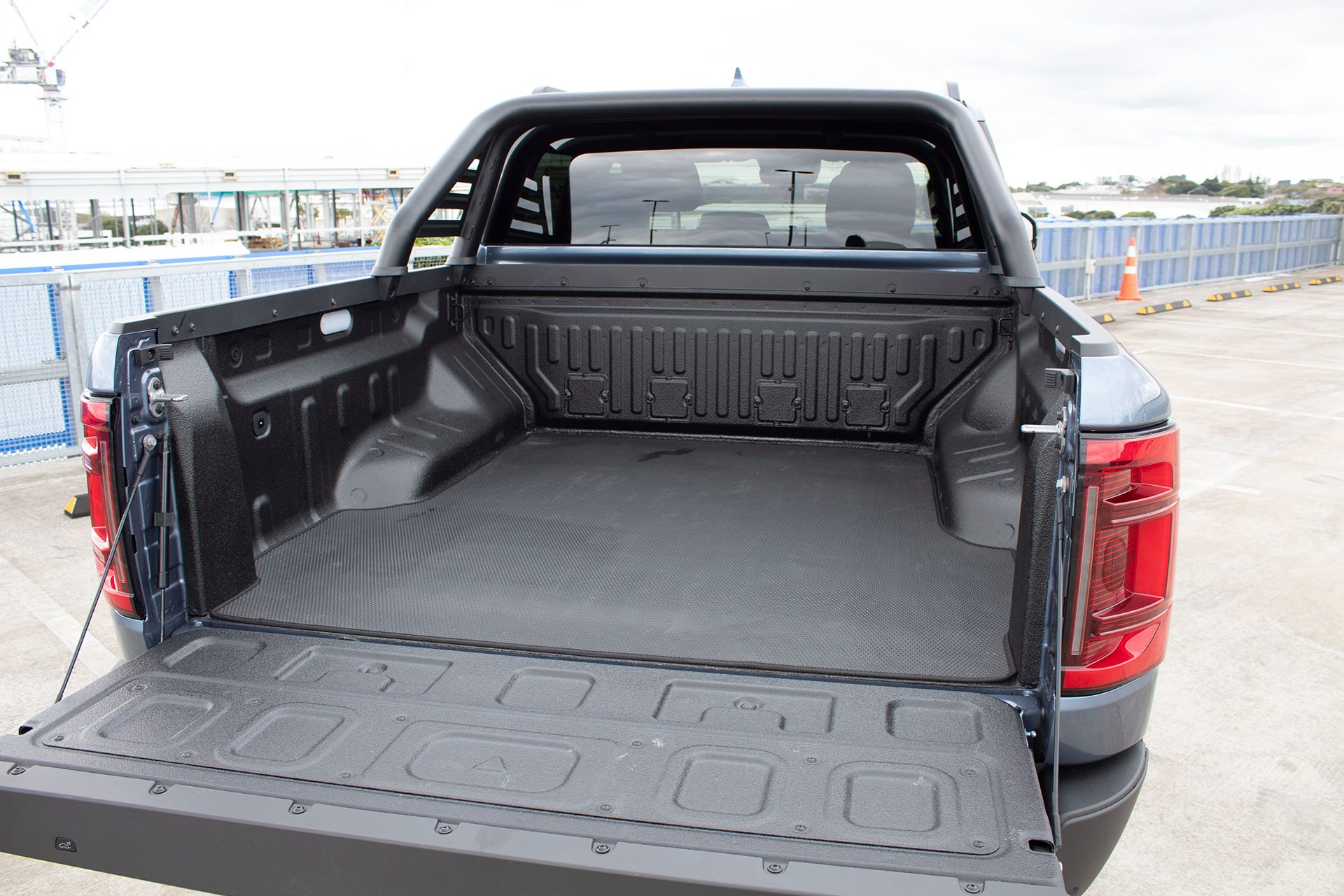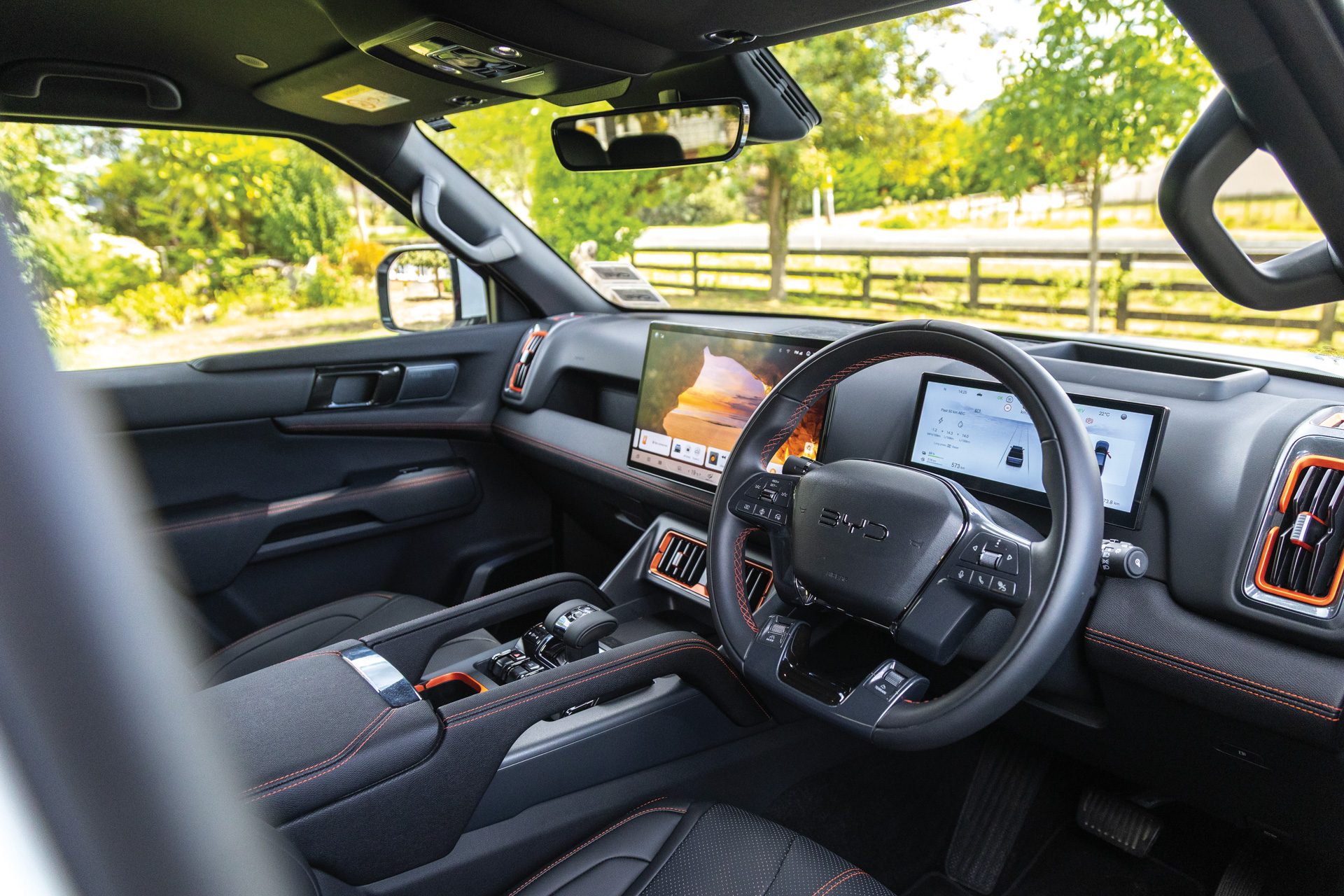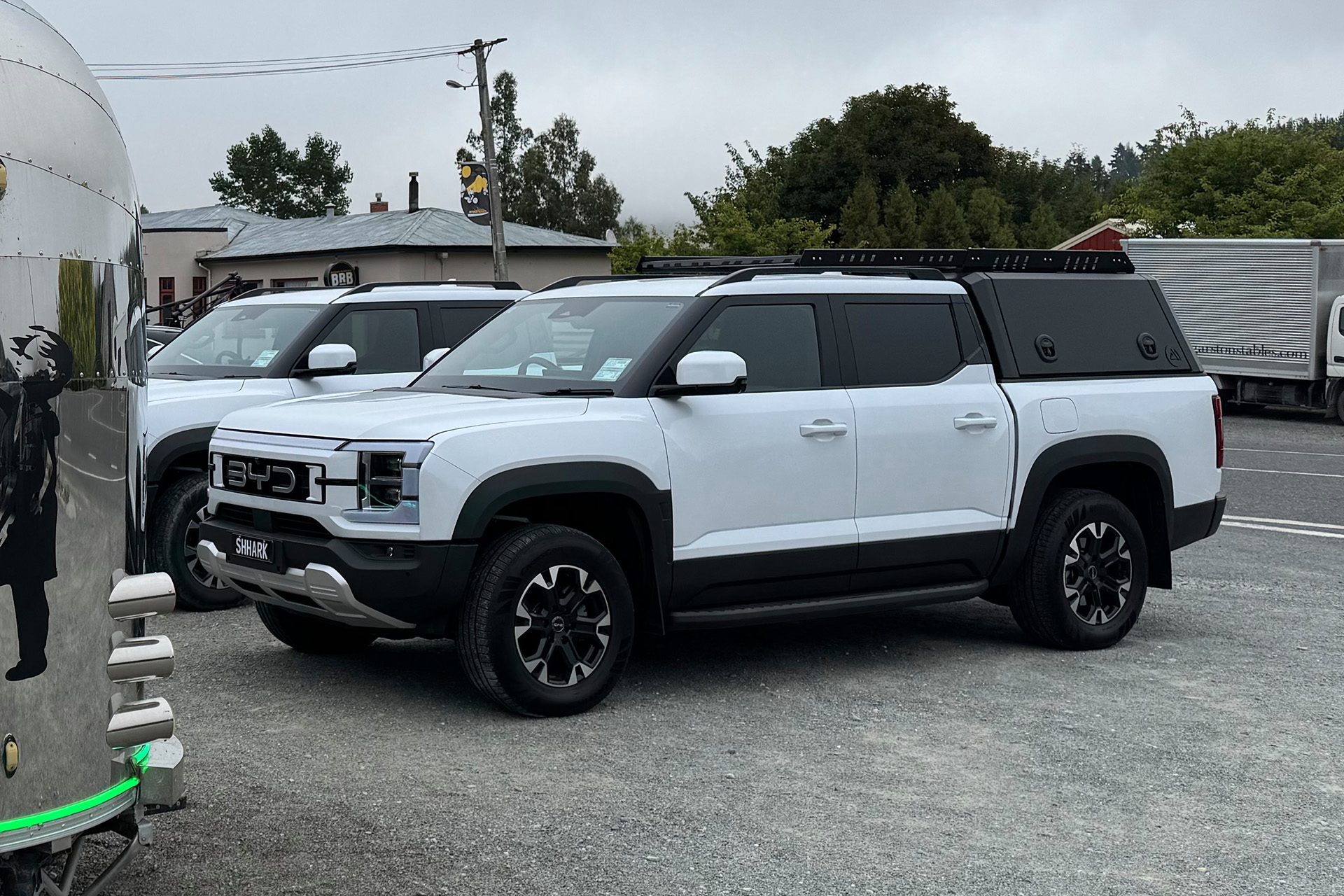Feature article
BYD Shark 6 Review: Buying Guide
New Zealand’s first plug-in hybrid ute, the BYD Shark 6, has made a splash with its keen pricing at $69,990.

Built on the same hybrid tech as the BYD Sealion 6, the Shark 6 combines a 1.5-litre turbocharged petrol engine with dual electric motors, delivering a total output of 321kW and 650Nm. A 29.58kWh battery sits beneath the chassis, providing an EV-only range of up to 100km, according to BYD. Charging is supported via both AC (7kW) and DC (55kW).
Despite being a hybrid, it feels more like a pure EV on the road. This is because the engine is used primarily to spin the generator, which charges the battery. The drive comes (predominantly) from the electric motors. Power delivery is smooth and torque is available instantly. In urban driving, you can expect to get between 80-100km of EV range, depending on how you use it. On open roads and hilly terrain, however, expect 60–70km before the petrol engine kicks in and the Shark switches to hybrid mode.
When the petrol engine is running, we recorded fuel consumption figures of 6–7L/100km, which is commendable for a 4WD ute of this size.
Towing & Practicality
For most users, the 2.5-tonne braked towing capacity will be ample; ideal for small to medium boats and caravans. Once a trailer is connected, the system automatically switches to hybrid mode. BYD recommends setting the battery’s state of charge to 70% while towing, ensuring the motors can access full power when needed.
During our towing test, torque delivery was smooth and plentiful. With the battery at 70%, the engine settled, and consumption stabilised at 14.5L/100km and that’s about double what we saw in HEV mode without a trailer. Charging the battery from 30% to full took 14 hours with a 2kW portable charger.
While the payload isn’t class-leading, the 790kg capacity is respectable and the tray is spacious: 1360mm wide at the tailgate (1200mm between wheel arches) and 1530mm long. The spray-in tray liner, load lighting and six tie-down points add to its practicality. Its standout feature? Vehicle-to-load capability, with three 10A outlets.
Interior & Features
While the rear tray means business, the cabin is more of a pleasure palace. The seats front and rear are plush and supportive. A long list of standard features complements a large central screen. While boot-up can be slow and some touchpoints are oddly small, the clarity is excellent and the surround-view camera is among the best we've seen. You’ll appreciate it in tight car parks, the Shark’s size makes judging its edges tricky.
Safety tech is comprehensive, though not without quirks. The driver monitoring system can be overzealous if you glance at the screen too long. Adaptive cruise control performs well, but the Intelligent Cruise (which includes lane-keeping) tends to overcorrect and wander within the lane, it’s best left off.
Ride & Refinement
The unladen ride isn’t class-leading, but it manages bumps well. The steering is light, though the turning circle is large. What truly stands out is powertrain refinement. Even in hybrid mode, the engine is quiet, with minimal vibration. Keep the battery topped up and fuel bills will be low.
At nearly $70k, the Shark 6 isn’t cheap, but given its performance, capability and electrification, it represents good value in today’s market.
Author
Other articles you might like
